Bianca Dino, Manager of Professional Learning at Learning Ally
As a teacher, I often felt isolated. Not from my students—I was too busy with them to feel lonely, and I truly cherished every minute in their company. But when it came to my colleagues, it was a different story entirely.
Like most educators, I was constantly juggling endless tasks, always feeling one step behind. Meaningful collaboration with fellow teachers frequently took a backseat to immediate classroom demands. The school year whirled by as we found ourselves confined to our individual classrooms, doing the best we could to serve our students while simply trying to stay afloat.
My school attempted to bring us together through professional learning cycles (PLCs), but these rarely provided opportunities to exchange insights about our evolving teaching methods. We focused primarily on interpreting data—a valuable exercise that unfortunately ended there. Furthermore, a competitive undercurrent in our school culture actively discouraged the collaboration we desperately needed.
The Power of Peer Observation
One day, despite my mile-long to-do list, I took a risk. I asked a colleague if I could observe her math lesson for just 20 minutes while my students were at music. I was struggling to teach my third graders the distributive property of multiplication effectively, and knew she excelled with technology integration. I assured her I wouldn’t be judging—just learning.
What I witnessed in that short time was transformative. She masterfully guided students through complex concepts using visual models, scaffolding their thinking in ways that immediately resonated. Inspired, I implemented the same approach in my classroom the next day—and it worked brilliantly.
That brief observation taught me more than any formal workshop I had ever attended. It wasn’t just about acquiring knowledge; it was about seeing effective teaching in action, reflecting on it, and applying it in a real classroom context.
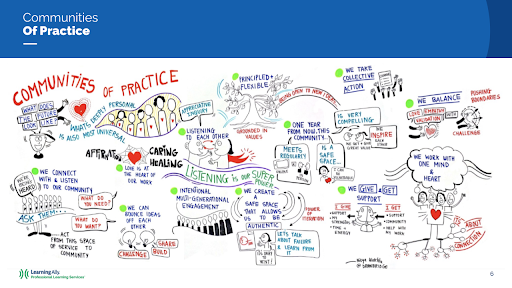
The Missing Pieces in Professional Development
As educators, we’re energized when we discover effective strategies that increase student engagement and achievement. I sought out professional development whenever possible and gained valuable insights, but something critical was still missing—authentic collaboration, real-world application support, and guidance to implement theory into practice.
In retrospect, I was too overwhelmed to recognize how desperately I needed peer connection and genuine support to thrive professionally. While we’ve acknowledged the increased emotional needs of students post-COVID, we’ve largely overlooked the psychological needs of educators themselves.
Many instructional approaches introduced during professional learning experiences either leaned too heavily on theory or lacked concrete implementation examples. This left many of us feeling perplexed about how to integrate new ideas into our carefully developed curriculum. Other workshops presented isolated strategies—often seemingly time-consuming or complicated—without explaining how to realistically incorporate them or why they were meaningful.
Most frustratingly, even when we discovered effective new practices, there were no opportunities to connect with colleagues about implementation experiences. We departed with our separate understandings and ideas—the classic “one-and-done” professional development model that rarely leads to sustainable change.
The Human Cost of Professional Isolation
I often reflect on how much faster I might have developed as an educator with more collegial support and collaboration. Beyond skill development, though, the lack of psychological support was most debilitating. Without community and belonging among fellow educators, I rarely felt seen or acknowledged for my efforts.
This isolation eventually took its toll. I burned out quickly, weakened by the heavy load of meeting my students’ academic and emotional needs without adequate support for my own. Sooner than I had ever anticipated, I became another statistic—a dedicated teacher leaving the profession.
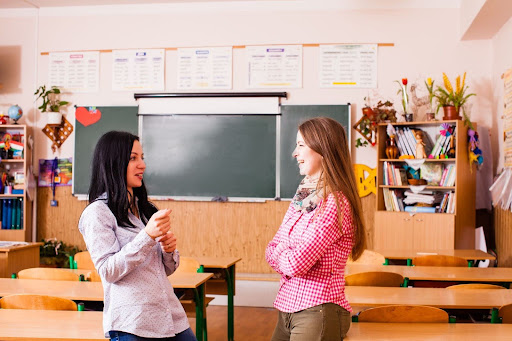
According to the Harvard Business Review, social belonging is a fundamental human need hardwired into our DNA. Yet 40% of people report feeling isolated at work, resulting in lower organizational commitment and engagement. Conversely, high belonging correlates with a remarkable 56% increase in job performance, 50% reduction in turnover risk, and 75% fewer sick days.
From Classroom Teacher to Professional Learning Developer
The silver lining in my story is that I transitioned into the professional learning field, where I now make an even broader impact for teachers and their students. Working closely with educators, I remain acutely aware of how it feels when professional development seems to waste precious time without providing commensurate value.
One of my key responsibilities in developing Learning Ally’s programs is synthesizing research from respected literacy experts into tangible, actionable strategies, always striving to balance the what, why, and how of effective instruction.At Learning Ally, we understand that educators need robust support to bridge the gap between knowledge and practice. That’s precisely where Communities of Practice come in. Both our Dyslexia Awareness and Structured Literacy in Action programs incorporate Communities of Practice sessions within their implementation models to extend and enhance workshop learning.
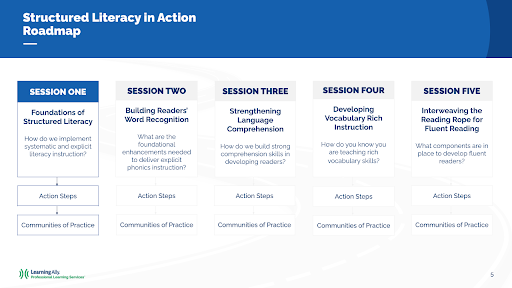
The Communities of Practice Difference
Truly effective professional learning isn’t a one-time event—it’s an ongoing cycle of reflection, collaboration, and real-world application. Our Communities of Practice align with Guskey’s Model of the Five Critical Levels of Professional Development and are designed to foster meaningful change by:
- Creating Psychological Safety & Community (Level 1: Participants’ Reactions) – A safe, non-evaluative space allows educators to openly share successes and challenges, fostering connection and trust among peers facing similar challenges.
- Enhancing Knowledge & Skill Development (Level 2: Participants’ Learning) – Sessions reinforce key concepts, encourage deeper exploration, and provide collaborative opportunities to refine instructional strategies.
- Supporting Classroom Application (Levels 3-4: Organization Support & Participants’ Use of New Knowledge) – Educators work together to implement and adapt strategies, ensuring ongoing support, accountability, and collaborative problem-solving.
- Driving Long-Term Impact (Level 5: Student Learning Outcomes) – Lasting change takes time and support. By processing new learning in a structured, supportive environment, teachers gain the confidence to continuously refine their practice, ultimately leading to stronger student outcomes.
Professional growth isn’t about perfection—it’s about persistence. Through Communities of Practice, educators move beyond theory to achieve real, sustainable impact in their classrooms.
Meeting Real District Challenges
Recently, a district approached us after investing in LETRS training—a comprehensive program designed to train educators in all aspects of the Science of Reading. While highly valuable, the program spans two years and represents a significant financial commitment. The district faced challenges in fully training its staff as educator turnover left many unable to complete the program, while new hires had no opportunity to participate. Consequently, their return on investment was lower than expected, and they needed additional support.Their educators also faced significant cognitive overload—a challenge Natalie Wexler highlights when discussing student writing. She emphasizes that students need writing broken into smaller, content-connected tasks due to its high cognitive demands. The same holds true for teachers—learning complex instructional strategies is far more effective when delivered in manageable, interconnected steps.
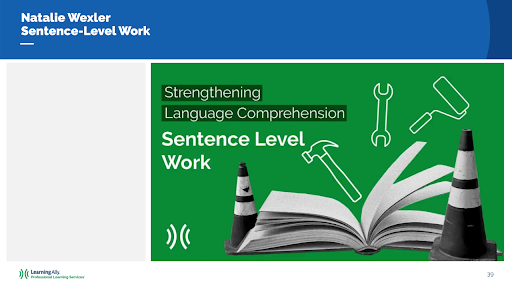
Evidence-based strategies should be modeled in ways that reduce cognitive load, allowing teachers to absorb, apply, and implement new practices more effectively. When learning feels accessible and immediately applicable, educators integrate new strategies with greater confidence and consistency.
The Proof Is in the Feedback
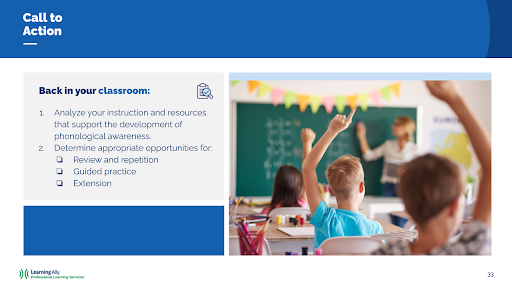
I know we’re on the right track when I read feedback from our educators or hear the excitement and energy in their voices during our final sessions together.
“I have learned SO MUCH this past year and it has made me a highly effective teacher! I wish I had this kind of training 29 years ago … but now that I know better, I am certainly committed to doing better and know my students will benefit as a result! Thank you again for such meaningful professional development!” –Structured Literacy in Action participant and 3rd grade teacher
An Opportunity For Educators
We’re thrilled to announce an exciting and rare opportunity to work with Learning Ally at no cost. Building on the success of our FY24 partnership with the Dollar General Literacy Foundation—where we created a free video literacy library for educators and hosted family literacy engagement events—we’re taking it a step further this year to bring our practice-based professional learning to districts, schools, and educators who need it most.
Through this partnership, we’ll deliver our Structured Literacy in Action program to 10 cohorts of 30 educators and offer the Supporting Striving Readers at Home workshop to families in each selected district.
This represents a rare opportunity to bring transformative, research-based literacy instruction to your educators at absolutely no cost.
If your school or district is interested in this opportunity, please express interest here by May 10, 2025.
About the Author
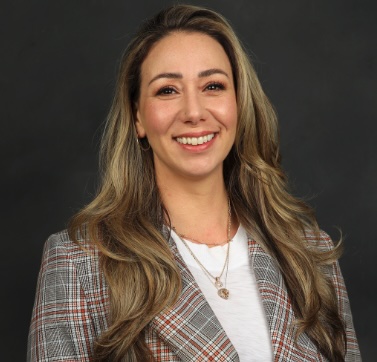
Bianca Dino, Manager of Professional Learning at Learning Ally
Bianca is dedicated to creating and implementing results-driven solutions that elevate the quality of literacy instruction across diverse programs to inspire transformative changes in teacher practices. Her primary focus is to empower educators and organizations to foster an inclusive, student-centered culture and establish robust infrastructures that guarantee positive change.